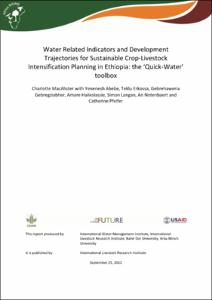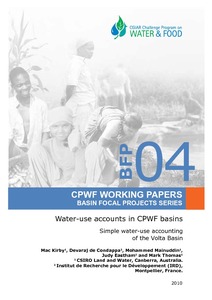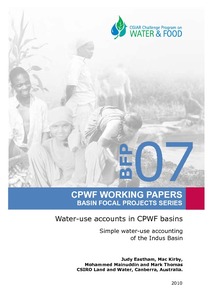Water: the conveyor belt for sustainable livelihoods and economic development
Water management for sustainable agricultural intensification and smallholder resilience in Sub-Saharan Africa
Water management strategies and allocation policies that support agricultural intensification across agro-ecological zones and hydrologic basins are required for building resilient agrarian communities in sub-Saharan Africa.We provide an overview of the research and investments needed to enhance agriculture in the region, with a focus on technology and institutions, while describing opportunities for improving rainfed crop production.We discuss a range of water management practices in three river basins that were part of the Challenge Program onWater and Food research on Basin Development C
Water scarcity and managing seasonal water crisis: lessons from the Kirindi Oya Project in Sri Lanka
Coping with scarcity of water supply for managing irrigation under uncertain and inadequate conditions has become part and parcel of many irrigation systems in the semiarid tropics of Asia. Based on a case study of the Kirindi Oya Irrigation and Settlement Project (KOISP) in southern Sri Lanka, this report provides evidence of the uncertain and inadequate inflow into the reservoir and its impact on the seasonal planning.
Water productivity improvements in Indian agriculture: Potentials constraints and prospects
Working Paper on Population Growth and Natural Resource Pressures in Pursat Catchment
This project examined the linkages between population and demand for food and water. Cambodia, in general, and Pursat Province in particular, have a complex and interesting mosaic of demographic attributes and development issues. The Tonle Sap basin and Pursat catchment possess the country’s largest potential water resources.
Water-use accounts in CPWF basins: Simple water-use accounting of the Volta Basin
This paper apples the principle of west –use accounts, developed in the first of the series, to the Volta River in West Africa. The Volta Basin covers six countries, with 85% of its area in Ghana and Burkina Faso.
Runoff in all three tributaries increases from 2-7% in the drier north to 12-26 % in the higher – rainfall south. Grassland is the dominant land use throughout Basin ranging from 76% of the Delta catchment in the south to 98% of the Arly catchment with corresponding water use of 55% and 92% of water used in each.
Whose waters? large-scale agricultural development and water grabbing in the Wami-Ruvu River Basin, Tanzania
In Tanzania like in other parts of the global South, in the name of 'development' and 'poverty eradication' vast tracts of land have been earmarked by the government to be developed by investors for different commercial agricultural projects, giving rise to the contested land grab phenomenon. In parallel, Integrated Water Resources Management (IWRM) has been promoted in the country and globally as the governance framework that seeks to manage water resources in an efficient, equitable and sustainable manner.
Water-use accounts in CPWF basins: Simple water-use accounting of the Indus Basin
This paper applies the principles of water-use accounts, developed in the first of the
series, to the Indus River basin in South Asia. The Indus Basin covers 3 countries, rises
in the Tibetan plateau in the vicinity of Lake Mansarovar in China. Irrigated agriculture
in the Basin is extensive with the construction of dams, barrages, and link canals to
distribute water, with modern engineering to support irrigation starting as early as the
mid 1800s.
Net runoff is about 10% of total precipitation. Irrigated agriculture covers 20% of
What determines contribution to a common fund for upkeep of water infrastructures? Evidence from experimental game in Coastal Bangladesh
This interactive poster was presented at the 2013 Stockholm World Water Week. It describes the results of a 'public good game' carried out with farmers in the polder zones of coastal Bangladesh in order to understand determinants of contributions to maintain a public good.
Working Paper on Population Growth and Natural Resources Pressures in Pursat Catchment
This working paper examines population growth in Pursat and its potential impact on food demand and land and water resources in a systematic and integrated manner. The main purpose of the paper is to kick-start a policy debate on population dynamics and food and water security in Pursat. The paper provides background information, observations and empirical analysis of resource demand (real or perceived) associated with population growth and policy decisions related to food and water security.






